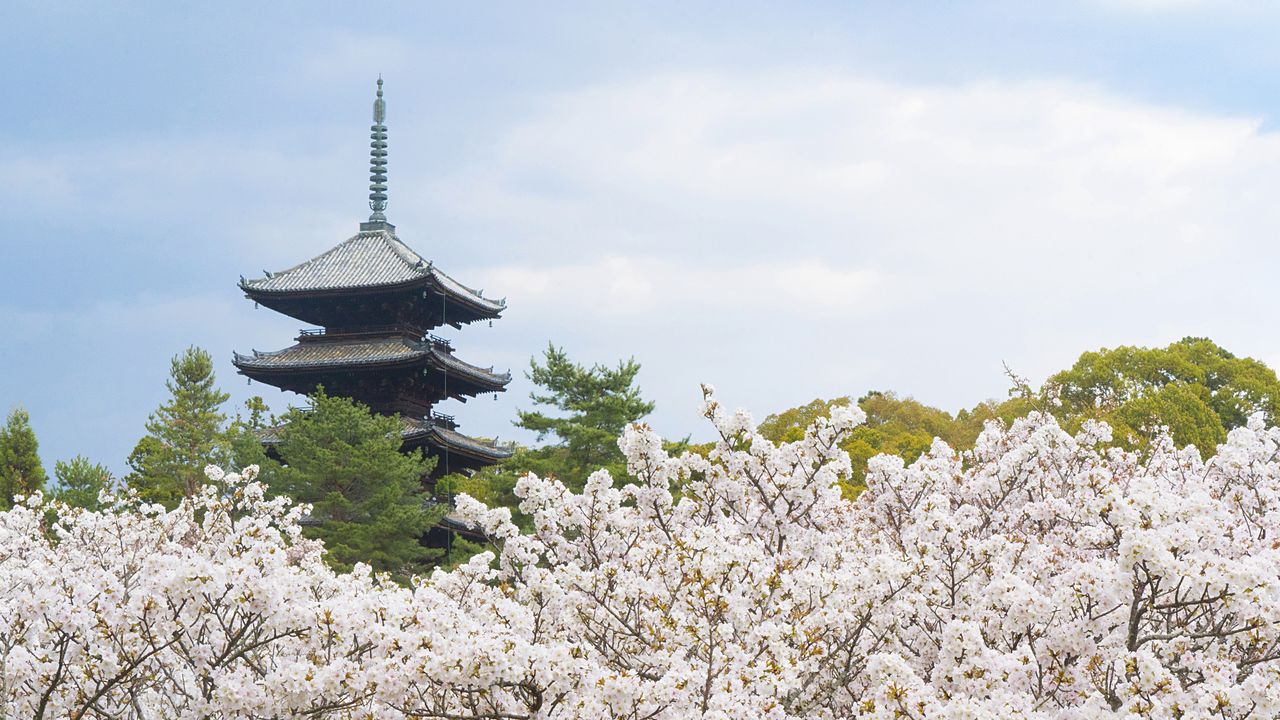
Kyoto’s Ninnaji: Pagoda in a Sea of Blossoms
Guideto Japan
Travel- English
- 日本語
- 简体字
- 繁體字
- Français
- Español
- العربية
- Русский
Late-blooming Omuro Cherry Trees
Located in Ukyō-ku, Kyoto, Ninnaji is the head temple of the Omuro school of Buddhism’s Shingon sect. It was founded in 888 by Emperor Uda to fulfill the will of his predecessor, Emperor Kōkō. Following his abdication, Emperor Uda took Buddhist orders, and had an omuro (residence) built on the temple grounds for himself to live in. It is because of this structure that the temple is also known as Omuro-gosho, the Omuro imperial residence. Thereafter, the temple has continued to enjoy a high social standing, with members of the imperial family serving as chief priests for generations. In 1994, the temple was designated part of the Historic Monuments of Ancient Kyoto, a UNESCO World Heritage Site.
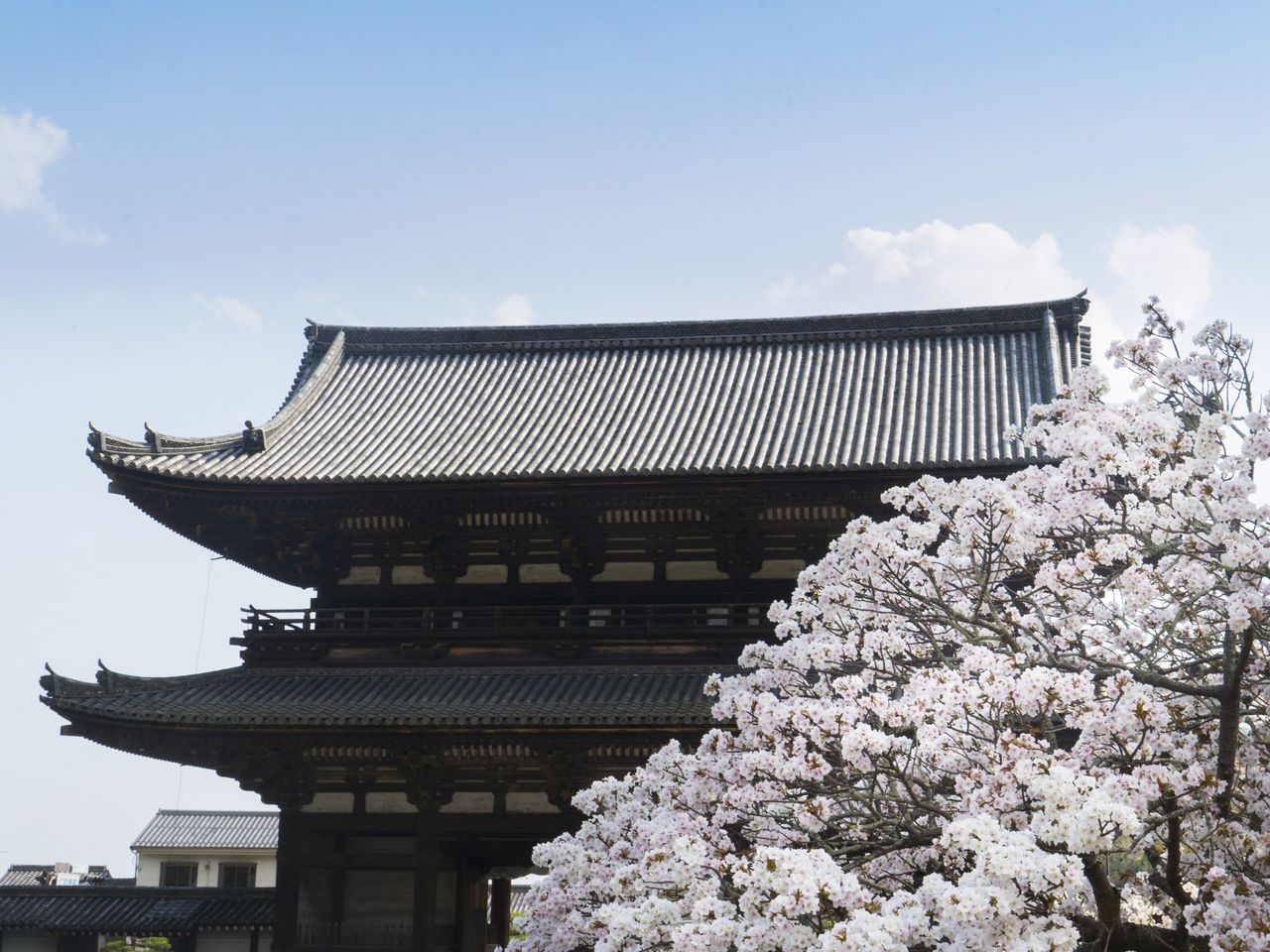
Cherry blossoms adorn Niōmon, the gate at the main entrance to Ninnaji.
Of particular note among the cherry trees at Ninnaji, which is considered one of the top 100 cherry blossom sites in Japan, is the omuro-zakura. A grove of these trees may be found by passing through the Chūmon gate, which is to the north of the visitor’s entrance at the Niōmon gate. The trees, which are just off to the left of the Chūmon, are characterized by having short trunks and being late bloomers. Peak viewing time typically arrives in mid-April, which is why Ninnaji is known as a site for sakura late in the season, even in Kyoto. Another factor contributing to the popularity of the place is that the short tree trunks of the omuro-zakura compared to other cherry trees make it possible to enjoy their charming blossoms at eye level.
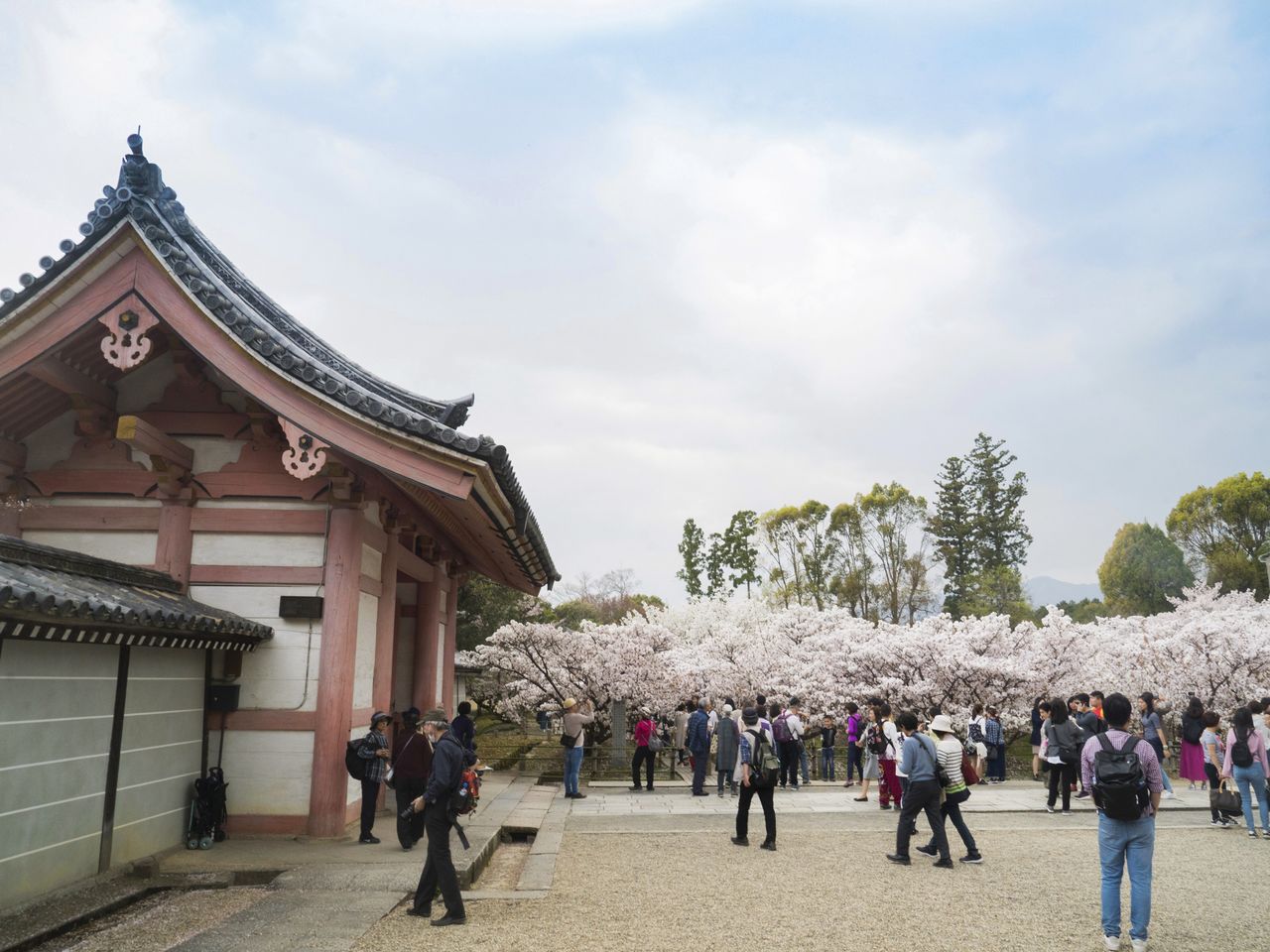
To the west past the Chūmon is an area full of omuro-zakura trees in bloom.
Along a path through the omuro-zakura grove, cherry blossoms bloom in profusion to the left and right at a lower position than most other cherry trees. This gives the impression of passing through a pink hedge as one walks along this path. The low rise at the end of the path affords a view that should not be missed. The height here raises the visitor’s line of sight above the level of the trees, allowing one to observe a five-storied pagoda to the east as though it were rising above pink clouds.
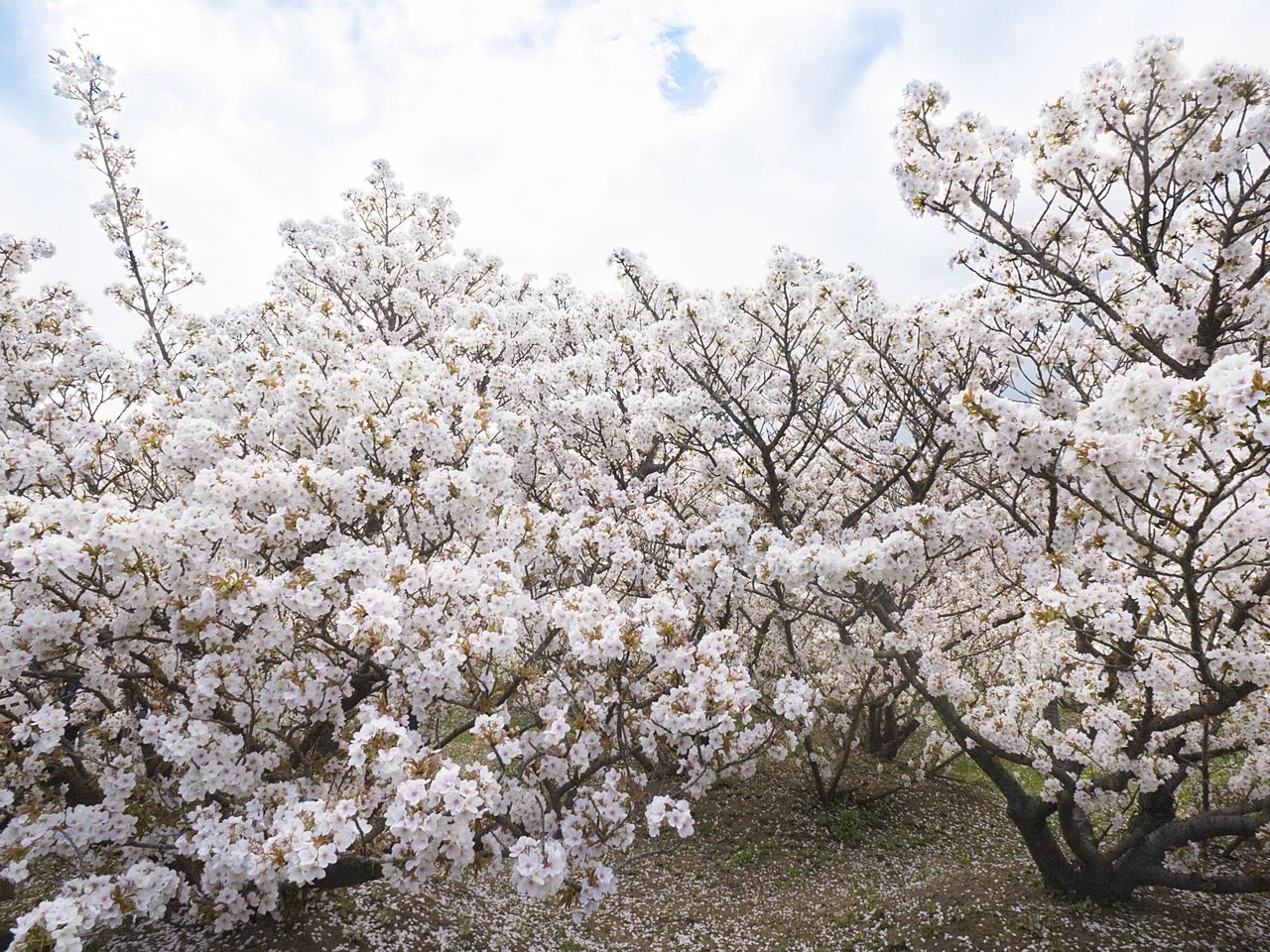
When these short omuro-zakura trees are in full bloom, they appear to form a pink hedge.
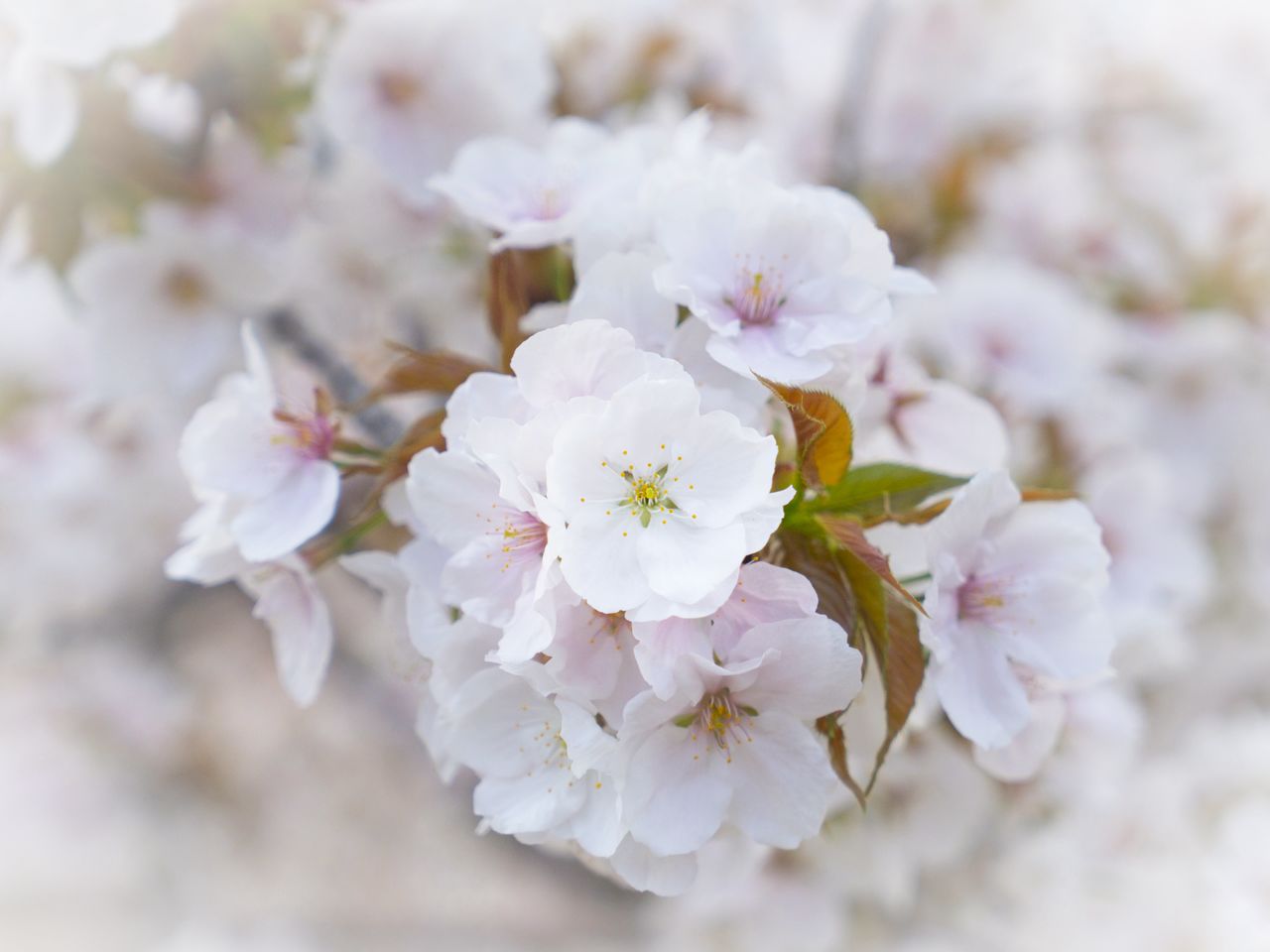
Omuro-zakura blossoms produce large flowers.
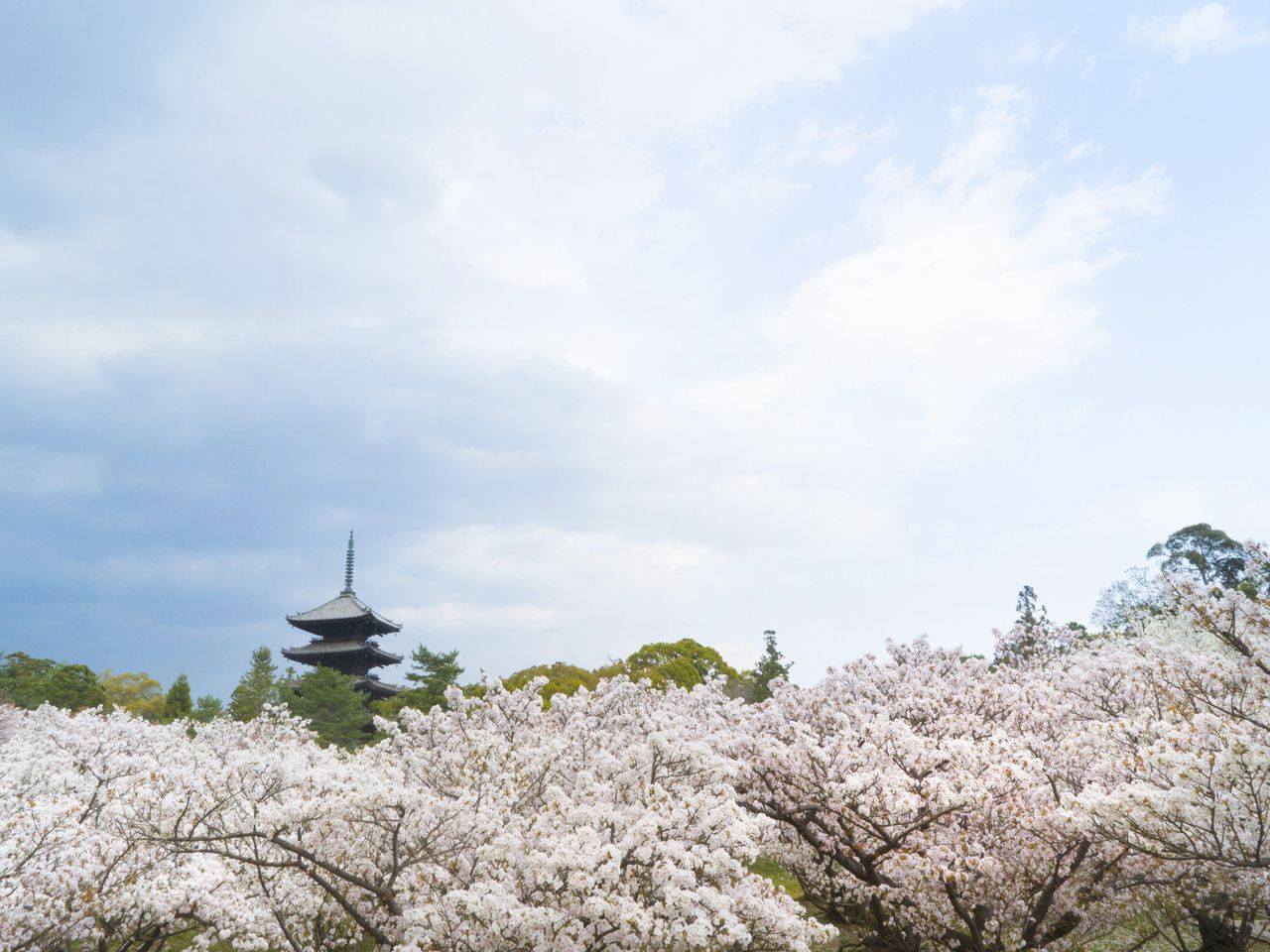
The pagoda seen from the rise, over the tops of the trees.
There are some 500 cherry trees of various types growing on the temple grounds, most of which are of the omuro-zakura and somei yoshino varieties. Among these, there are also some rare garden cultivars to be found, such as ōsawa-zakura, with flowers consisting of some 10 petals of a light magenta hue, and ariake, with white flowers that give off a mild scent. Visitors are urged to seek these out among the more numerous types and enjoy their distinctive charms.
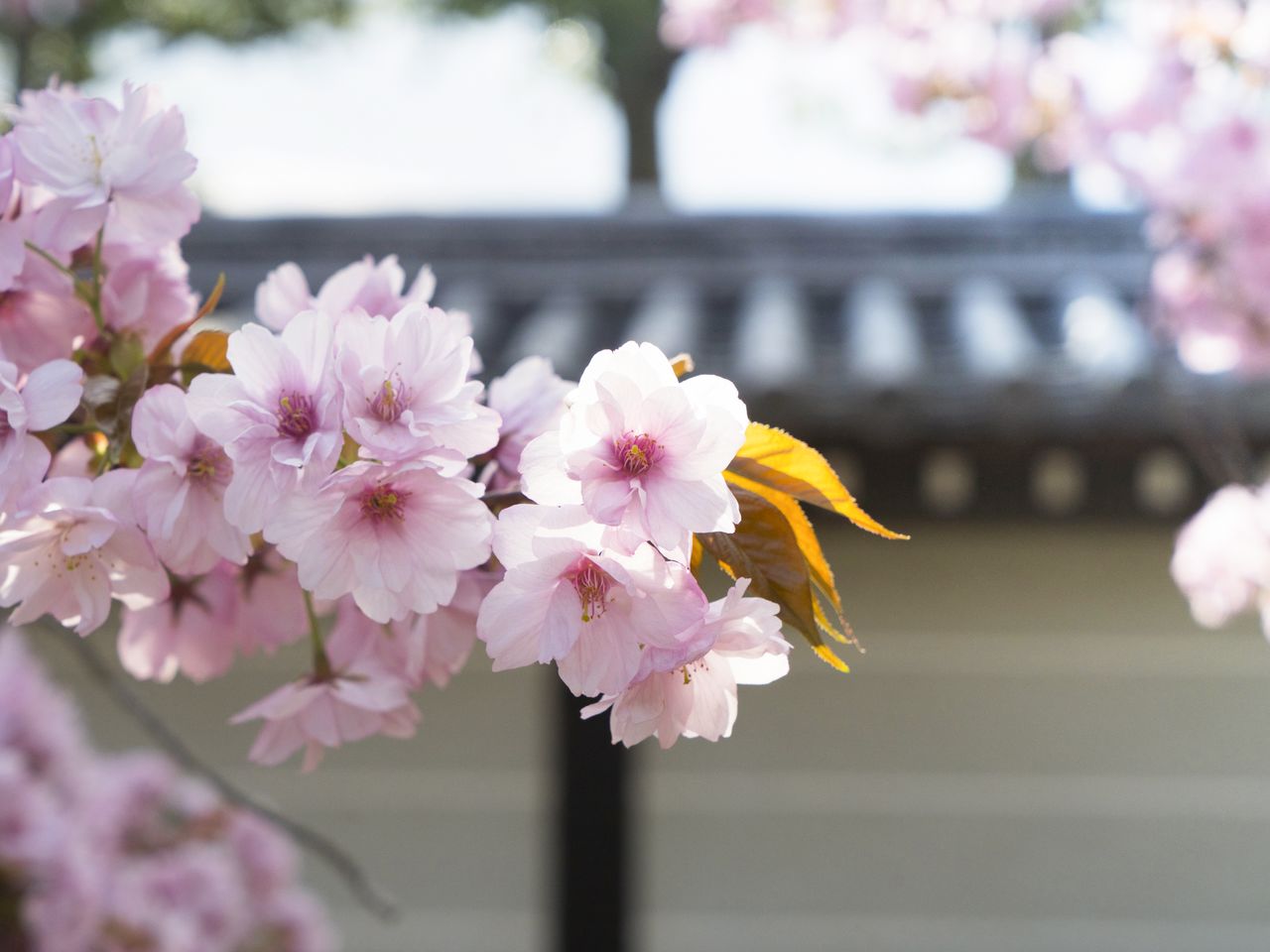
Ōsawa-zakura trees have flowers with many overlapping, darker-hued petals.
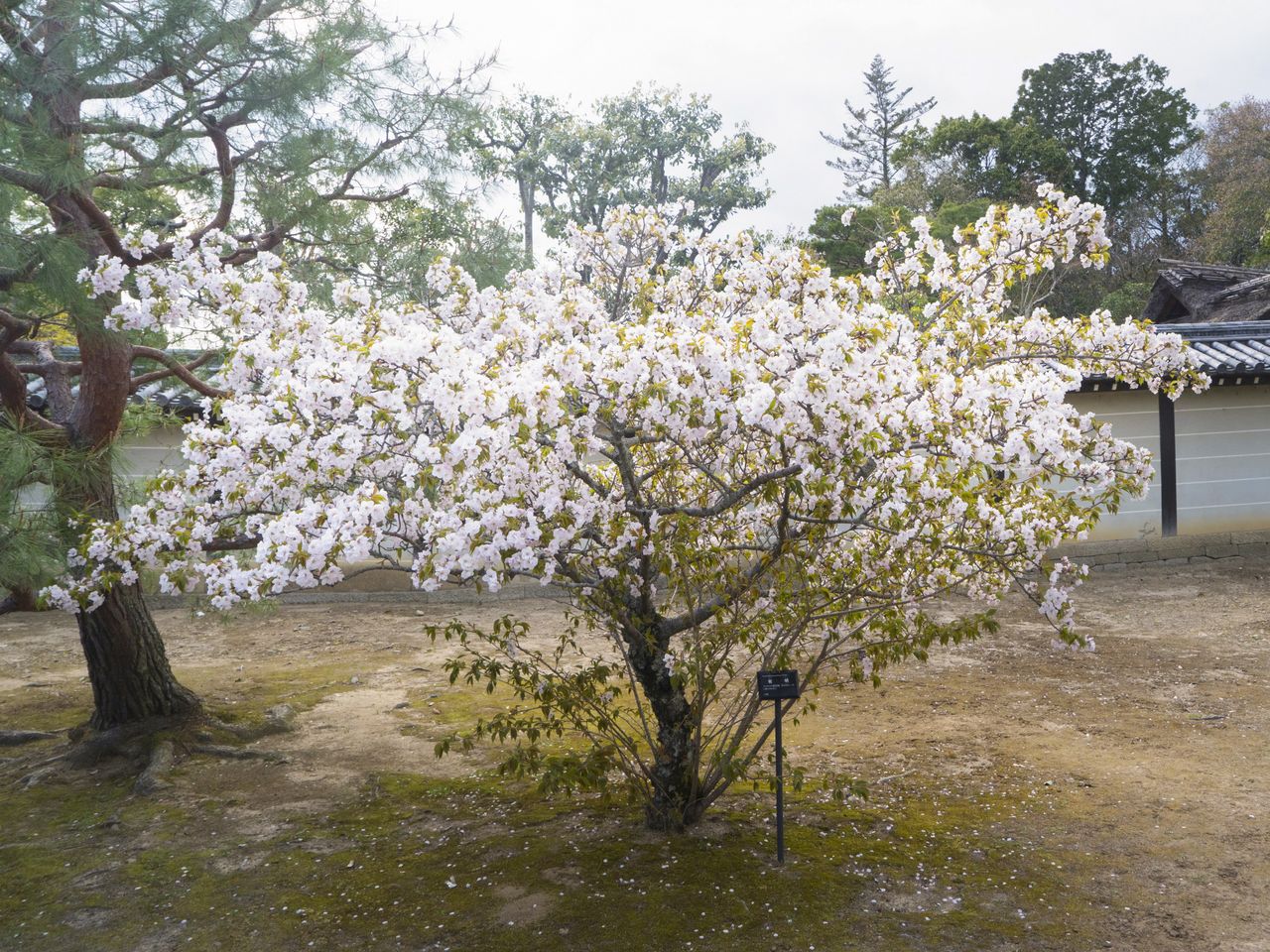
Ariake cherry trees are distinguished by their white flowers and elegant scent.
Access: from JR Kyoto Station, take City Bus 26 to Omuro Ninnaji stop, approx. 40 mins., then a short walk. Or walk approx. 3 mins. from Omuro Ninnaji Station on the Randen Kitano Line.
Admission: entry to the temple grounds is free except for a special admission fee of ¥500 during cherry blossom time (¥200 for ages 15 and under). This fee can be combined with admission to the main building and the Reihōkan treasure house, and group discounts are also available.
(Originally published in Japanese. Reporting and text by Fujii Kazuyuki, 96Box. Photographs by Kuroiwa Masakazu and Fujii Kazuyuki, 96Box. Banner photo: A view of the pagoda and the omuro-zakura trees.)
Kyoto tourism World Heritage Kansai cherry blossoms sakura landscape shrine and temple